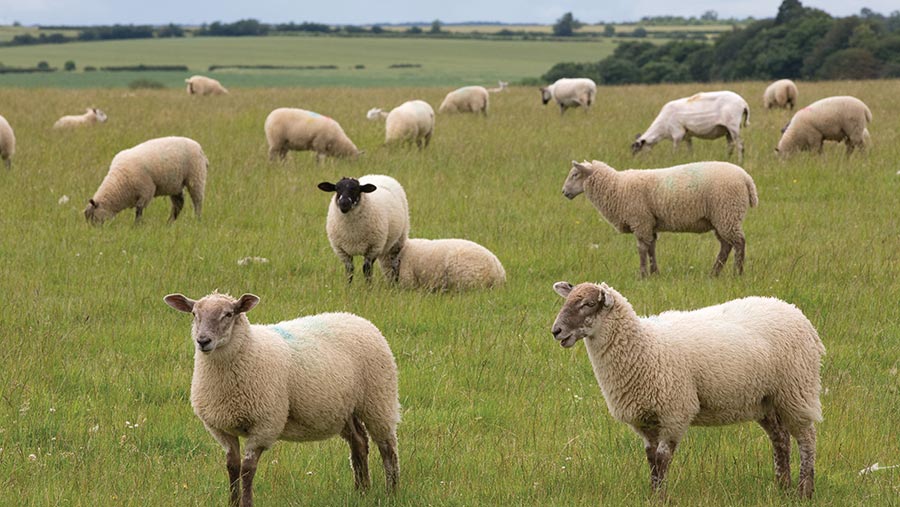Outlook for sheepmeat values hangs in the balance
 © Tim Scrivener
© Tim Scrivener Prices for both hoggets and new-season lamb have been well supported during the past week, with strong demand from the Muslim festival of Eid al-Adha in late June.
Auctioneers reported a surge in demand and numbers coming forward in the build-up to the festival.
New-season lamb prices averaged 310p/kg liveweight at auction marts, up 11.5p/kg on the week, while hoggets averaged 227p/kg.
See also: Lamb prices falter, but uplift in demand forecast for late June
At Ludlow market on Monday 26 June, buyers were reportedly keen to secure numbers with a premium for well-covered lambs and also for ram lambs.
The best export quality lambs peaked at 400p/kg liveweight, with lambs averaging 310p/kg overall.
Trade at Sedgemoor Auction Centre on 26 June averaged 299p/kg liveweight for new season lambs, with prices topping at £179/head.
Auctioneer Paul Ashton of Greenslade Taylor Hunt said finished lambs at Sedgemoor sold to another very strong trade for the heavier and well-fleshed lambs, but generally at lower levels for lean and light types.
Deadweight prices fell by more than 20p/kg on the week, with the GB new-season lamb SQQ averaging 635.2p/kg deadweight for the week ending 24 June. Prices are now 11p/kg below the same week last year.
Lower prices forecast
Livestock marketing group Meadow Quality has forecast lamb prices to ease slightly following the festival.
The pound has continued to strengthen against the euro during the first half of 2023, making exports slightly less competitive. Midweek, the pound was at €1.16, making the euro worth 86p.
However, heavy lamb prices on the continent have seen some support, and EU heavy lambs are currently up 0.8% on the year, while light lambs are up 4.3%.
The latest AHDB Agri-Market Outlook has forecast a 2% increase in production for 2023, driven by higher carry-over and a broadly stable lamb crop, while the breeding flock is forecast to grow by 0.5% by 1 December 2023.
Hannah Clarke, senior analyst at AHDB, said: “Assuming average conditions and grass growth, compared with 2022 we would expect a greater proportion of this year’s lambs to be slaughtered before Christmas.”
Between June and the end of the year, 7.8 million lambs are forecast to be slaughtered, which is 5% more than the previous year. However, Ms Clarke points out this is still below the five-year average.
Global trade
Imports are forecast to fall by 19% year-on-year, according to AHDB estimates, driven by weaker domestic demand, while exports are forecast to grow by 14%.
Ms Clarke said: “The UK-Australia and UK-New Zealand free-trade agreements came into force at the end of May, which opens the door to more imports of red meat. However, our modelling suggests imports will not dramatically increase because of these agreements.”
This was because Australian and New Zealand exporters already had access to lucrative markets in Asia, she said.
“However, if circumstances change, then there is potential for more product to be sent to the UK, so there may be harmful consequences in the future.”
